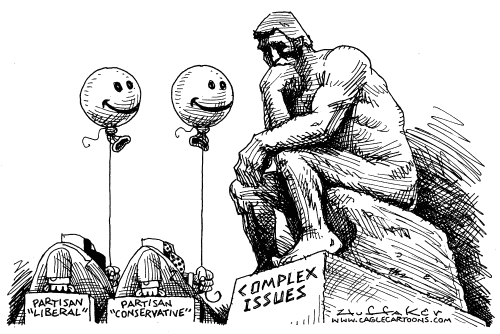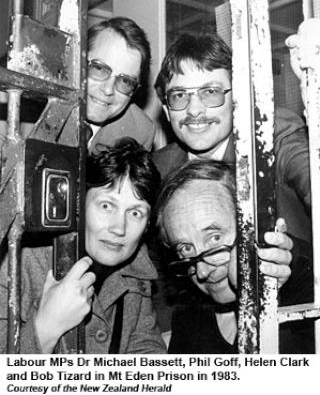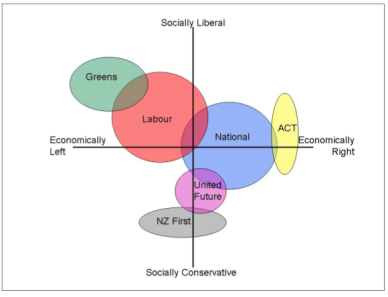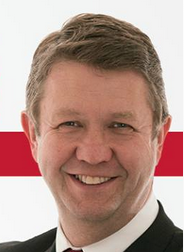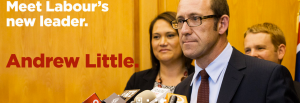In the last blog, I looked at conservatism as a disposition. You know the type; the general, not-thoroughly-thought-out feeling that needlessly changing things is just bad.
In this blog I’ll look at conservatism as a philosophy. There are different takes on philosophical conservatism, but I prefer the approach in Noel O’Sullivan’s 1976 book Conservatism (great title, right?). O’Sullivan considers conservatism a “a philosophy of imperfection”, in which people, and their attempts to create equal or free societies, are doomed to fail.
It’s built on a sceptical view of human nature, one that sounds suspiciously close to the Bible. O’Sullivan claims that conservatives prefer incremental change (rather than radical change) and limited government; however, philosophical conservatism is divided on the ideal level of state involvement.
Philosophical conservatism is separated into two main schools: Traditionalist Conservatism and New Right conservatism. Until the latter half of the twentieth century, Traditionalist Conservatism was more common. Then came the oil shocks of the 1970s, and with them Milton Friedman, Margaret Thatcher, and the New Zealand Labour Party. The oil shock led to the resurgence of classical economic Liberalism, also known as Neoliberalism (discussed in the next post). Neoliberalism combined with social conservatism to create New Right Conservatism… but more on that later. In this blog I’ll look at the more old-school Traditionalist Conservatism.
Traditionalist Conservatism is the old-school paternalist, government-knows-best form of conservatism. Socially speaking, Traditionalist Conservatism places a higher value on duty, loyalty and authority than other political philosophies, which leads it to favour a greater role for government in preventing social ‘permissiveness’. Economically speaking, Traditionalist Conservatism’s pessimistic view of human nature means it doesn’t trust the market to allocate resources in a moral way. As such, it accepts relatively more state intervention in the economy. Traditionalist Conservatism has several important strands, including:
- Authoritarian Conservatism
- ‘One-nation’ Conservatism
- Christian Democracy
Authoritarian Conservatism in the West grants extensive power to an existing ruling class, without the consent of the citizenry. Authoritarian regime types in the West have included monarchy, aristocracy, and rule by religious or military elites. Authoritarian Conservatism has fallen from favour since the French Revolution, and especially since the end of the Second World War. It’s basically not a thing anymore in the West.
‘One Nation’ Conservatism is frequently associated with the UK’s 19th century Conservative Government led by Benjamin Disraeli. It has a bit of a nationalist flavour, in that it favours conserving the nation rather than a particular class or institution (eg the aristocracy or the crown). It favours an interventionist state and advocates limited social and economic reform in order to promote a sense of national identity, solidarity and stability. But they didn’t really care for people outside the nation. It’s kind of like “We can’t let a British man starve! This isn’t India!” After the Second World War, One Nation Conservatism united social conservatism with Keynesian economic policies. One Nation conservatism fell from favour in the 1970s and 1980s when the oil shocks challenged Keynesian policies, although it still persists amongst those who like to reminisce about the good old days over a wine biscuit or six. David Cameron has claimed he leads a One Nation government, but that’s basically bullshit. Austerity is not One Nation, it’s neoliberal. But more on that later.
Similarly, Christian Democracy also favours a socially conservative, economically interventionist state, although it differs in conceiving of society as a Christian community. Christian democrat parties are more common in Europe. Examples include Germany’s CDU, led by Angela Merkel and Mexico’s PAN, which ruled Mexico for twelve of the last fifteen years. But Christian politics in general is more complex than this, and will get more attention in a future blog.
I don’t think there’s a huge amount that the Left can learn from Traditional Conservatism in general, due to our huge incompatibility. We don’t think the same thing about existing institutions, and we (mostly) we don’t share the same view on human nature. Rather, we can benefit from learning about Traditional Conservatism. In particular, it’s good to know that traditional conservatives are vulnerable to claims about goodness, and that they think the state has moral obligations to the citizenry. I’ll show how we can exploit these in a future blog.
This is the fifth in a series looking at the Right from a left-wing perspective. This first four can be found here (1), here (2), here (3), and here (4).
